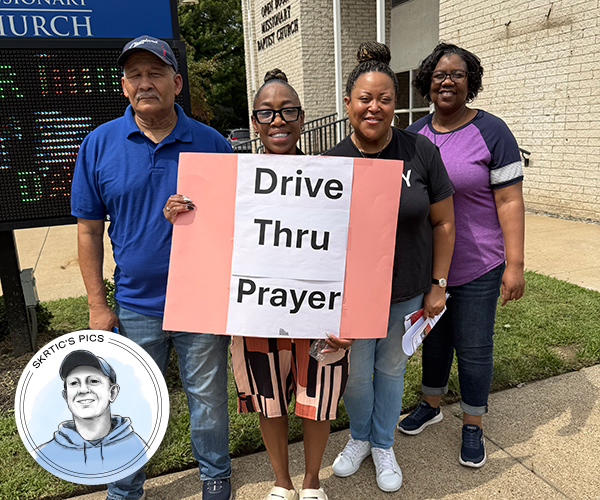2717 Lorain Road
Who hasn’t strolled by the kitschy faux Swiss chalet at Lorain Avenue and West 26th Street and wondered what goes on inside? The Hansa Import Haus, which has been serving the city’s German community for more than 40 years, features a cornucopia of German, Austrian and Swiss products. A cooler upfront is crammed with German butters, cheeses and sausages. Rows of grocery-store shelving sag beneath the weight of hard-to-find Bavarian imports, including heather honey, German chocolate and rare Rauchbier, a smoke beer from Bamberg. And if you’d prefer to experience the real thing, Hansa also houses a full-service travel agency.
2. Jeptha Wade Memorial Chapel
Lake View Cemetery, 12316 Euclid Ave.
The Jeptha Wade Memorial Chapel, commissioned in memory of the tycoon and philanthropist by his grandson J.H. Wade II in 1898, has a lot of big names attached to it. The architectural firm of Hubbell & Benes, who also built the Cleveland Museum of Art in 1916, designed the exterior of the Lakeview Cemetery gem. The interior, resplendent in stained glass, bronze, and marble and full of intricate mosaic work, was deigned by Louis Comfort Tiffany. The bronze doors, weighing four tons, can be opened and closed with one hand and have not had to be serviced once in more than 100 years of use.
3. Hanna Family Mausoleum
Lake View Cemetery, 12316 Euclid Ave.
Henry Bacon, the noted architect who designed the Lincoln Memorial in Washington D.C., also left his mark here. He created the Hanna family mausoleum, located in a peaceful, leafy enclave in Lake View Cemetery. Marcus Hanna, a famous Cleveland industrialist who became senator, is buried there with other members of his family.
4. Airship Ticket Office, 21st Floor of the Huntington Bank Building
925 Euclid Ave.
The walnut-paneled elevator ride takes five seconds and covers eighty years. Done up in Art Deco, the 21st floor of the Huntington Bank Building served as the ticket office for the short-lived U.S. Airship Company of North America. No one ever made the trek upstairs for a rooftop commute, but the outline of the old ticket windows still marks the hallway. After zeppelin travel went big-belly up, the room housed the private (and males-only) Mid-Day Club.
5. Artemus Ward’s Plain Dealer Office
East 6th Street and Superior Avenue
He became the Jon Stewart of the Civil War. But first, Charles Farrar Browne was a 23-year-old Plain Dealer editor, working from an office where the Louis Stokes Wing of the Cleveland Public Library stands today. Born in Maine, Browne charmed his new hometown by spoofing Public Square parades (“the procession was two miles in length, as was the prayer of the clergymen”) and the residences rising along Euclid Street (“The houses … are covered with tin roofs and paint and mortgages.”) Writing as “Artemus Ward” his political satire gained a national audience, including Abraham Lincoln. “Our (newspaper) duties will not permit us to reform the world, but we wish those who are engaged in that agreeable business would, for a while, stop advocating a bran-bread diet, stop railing at fashion, stop denouncing the imbibiation of mint juleps and whiskey plain, stop putting themselves into ‘trance states,’ and go lecturing against the particular gigantic evil of our age, MONEY GATHERING.”



